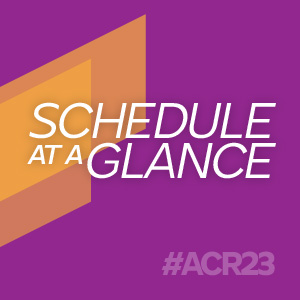Abstract Session
Vasculitis
Session: Abstracts: Vasculitis – ANCA-Associated I (0853–0858)
0855: Real-world Experience with Avacopan in ANCA Vasculitis: A Multi-center Retrospective Cohort Analysis
Sunday, November 12, 2023
4:30 PM - 4:40 PM PT
Location: Ballroom 20D

Sebastian Sattui, MD, MS (he/him/his)
University of Pittsburgh
Pittsburgh, PA, United StatesDisclosure(s): No relevant disclosure to display
Presenting Author(s)
Sebastian Sattui1, Colin Diffie2, Aisha Shaikh3, Julia Ford4, David Bulbin5, Ora Gewurz-Singer6, Faten Aqeel7, Reza Zonozi8, Abdallah Sassine Geara9, Dustin Le7, Gabriel Sauvage8, Madeline Chung10, Isabelle Ayoub10, Frank Cortazar11, Andrew Bomback12, Karina Guaman12, Jason George13, John Niles8 and Duvuru Geetha7, 1University of Pittsburgh, Pittsburgh, PA, 2Washington University, St. Louis, MO, 3Washington University in St. Louis, St. Louis, MO, 4University of Michigan, Ann Arbor, MI, 5Geisinger Health System, Danville, PA, 6University of Michigan, Huntington Woods, MI, 7Johns Hopkins University, Baltimore, MD, 8Massachusetts General Hospital, Boston, MA, 9University of Pennsylvania, Philadelphia, PA, 10Ohio State University, Columbus, OH, 11New York Nephrology, Watervliet, NY, 12Columbia University, New York, NY, 13Geisenger Health, Danville, PA
Background/Purpose: Avacopan (AVP) is a recently approved adjunct therapy for remission induction of ANCA-associated vasculitis (AAV). Data on real-world use of AVP in AAV are lacking. The objective of this study was to describe the current practice in the use of AVP for the treatment of AAV and associated outcomes.
Methods: We performed a multi-center retrospective cohort study of 80 adult patients with new and relapsing AAV treated with AVP. Follow-up time was up to 52 weeks from diagnosis. The primary outcome measure was clinical remission, as determined by the investigator. Secondary outcome measures included Birmingham Vasculitis Activity Score (BVAS) 3, cumulative glucocorticoid dose, estimated glomerular filtration rate (eGFR) (mL/min/1.73m2), proteinuria (g/g), hematuria, disease relapses, hospitalizations, end-stage kidney disease (ESKD), infections, and death. Data are presented as mean (±SD), median (IQR), or number (percent).
Results: Mean age was 59 years (±17), 65% were female, 59 (74%) had MPO ANCA, and 76 (95%) had kidney involvement. At diagnosis, 19 patients (24%) had eGFR < 15 mL/min/1.73m2, and 8 (10%) were dialysis-dependent. Rituximab plus cyclophosphamide was the most common induction regimen (49%), followed by rituximab only (46%). AVP was started 8.8 weeks (SD ± 19.6) after glucocorticoid initiation with 58 patients (73%) discontinuing prednisone 7.5 weeks (±18) after starting AVP. Outcomes are summarized in Table 1. Among the 60 patients (75%) with hematuria at diagnosis, 70% had resolution of hematuria 14 weeks (±14) after AVP initiation. Nadir proteinuria of 0.3 g/g (0.1 – 0.7) was achieved 10 weeks (±21) after AVP initiation. The cumulative dose of IV methylprednisolone was 2.4 g (±1.4), and 12-week oral prednisone was 1.8 g (±1.1). At week 26, 5 of 59 patients (8%) remained on prednisone. Of the 80 patients, 60 were started on remission maintenance therapy with rituximab (n = 56), azathioprine (n = 3), and intravenous immunoglobulin (n = 1).
AVP was stopped in 25 patients (31%): 11 (14%) after completing 52 weeks of treatment, and 14 (18%) before 52 weeks due to adverse events, including 4 patients with transaminitis. At a mean follow-up time of 8 months (±6), 5 (6%) had a disease relapse, 7 (9%) had infections requiring hospitalization, 3 (4%) progressed to end-stage kidney disease, and 3 (4%) patients died.
Conclusion: Patients with AAV treated with AVP in conjunction to standard remission-induction therapy have a high rate of clinical remission at weeks 26 and 52 and demonstrate a sustained improvement in eGFR. There was variability in the time till initiation of AVP and glucocorticoid discontinuation. AVP was discontinued in a group of patients due to adverse events or after 1-year of continuous treatment. Further data on the longer-term use of AVP is needed.
.jpg)
S. Sattui: AstraZeneca, 5, Bristol Myers Squibb Foundation, 5, Rheumatology Research Foundation, 5, Sanofi, 2, 5; C. Diffie: ChemoCentryx, 6; A. Shaikh: None; J. Ford: None; D. Bulbin: AbbVie/Abbott, 2, 6, Alexion, 2, 6, Amgen, 2, 6, Novartis, 2, Sanofi Genzyme, 6; O. Gewurz-Singer: None; F. Aqeel: None; R. Zonozi: None; A. Sassine Geara: Amgen, 5, Chinook, 5, GlaxoSmithKlein(GSK), 2, Novartis, 2, Travere, 2, 5, Vera, 5; D. Le: None; G. Sauvage: None; M. Chung: None; I. Ayoub: Aurinia, 1; F. Cortazar: Amgen, 2, 6, Aurinia, 2, 6, Calliditas, 6, Travere, 2, Valenza Bio, 2; A. Bomback: Amgen, 2; K. Guaman: None; J. George: None; J. Niles: Amgen, 1, 12, planning participation is a phase IV trial; D. Geetha: Amgen, 2, Aurinia, 2, calliditas, 2, chemocentryx, 2, GlaxoSmithKlein(GSK), 2.
Background/Purpose: Avacopan (AVP) is a recently approved adjunct therapy for remission induction of ANCA-associated vasculitis (AAV). Data on real-world use of AVP in AAV are lacking. The objective of this study was to describe the current practice in the use of AVP for the treatment of AAV and associated outcomes.
Methods: We performed a multi-center retrospective cohort study of 80 adult patients with new and relapsing AAV treated with AVP. Follow-up time was up to 52 weeks from diagnosis. The primary outcome measure was clinical remission, as determined by the investigator. Secondary outcome measures included Birmingham Vasculitis Activity Score (BVAS) 3, cumulative glucocorticoid dose, estimated glomerular filtration rate (eGFR) (mL/min/1.73m2), proteinuria (g/g), hematuria, disease relapses, hospitalizations, end-stage kidney disease (ESKD), infections, and death. Data are presented as mean (±SD), median (IQR), or number (percent).
Results: Mean age was 59 years (±17), 65% were female, 59 (74%) had MPO ANCA, and 76 (95%) had kidney involvement. At diagnosis, 19 patients (24%) had eGFR < 15 mL/min/1.73m2, and 8 (10%) were dialysis-dependent. Rituximab plus cyclophosphamide was the most common induction regimen (49%), followed by rituximab only (46%). AVP was started 8.8 weeks (SD ± 19.6) after glucocorticoid initiation with 58 patients (73%) discontinuing prednisone 7.5 weeks (±18) after starting AVP. Outcomes are summarized in Table 1. Among the 60 patients (75%) with hematuria at diagnosis, 70% had resolution of hematuria 14 weeks (±14) after AVP initiation. Nadir proteinuria of 0.3 g/g (0.1 – 0.7) was achieved 10 weeks (±21) after AVP initiation. The cumulative dose of IV methylprednisolone was 2.4 g (±1.4), and 12-week oral prednisone was 1.8 g (±1.1). At week 26, 5 of 59 patients (8%) remained on prednisone. Of the 80 patients, 60 were started on remission maintenance therapy with rituximab (n = 56), azathioprine (n = 3), and intravenous immunoglobulin (n = 1).
AVP was stopped in 25 patients (31%): 11 (14%) after completing 52 weeks of treatment, and 14 (18%) before 52 weeks due to adverse events, including 4 patients with transaminitis. At a mean follow-up time of 8 months (±6), 5 (6%) had a disease relapse, 7 (9%) had infections requiring hospitalization, 3 (4%) progressed to end-stage kidney disease, and 3 (4%) patients died.
Conclusion: Patients with AAV treated with AVP in conjunction to standard remission-induction therapy have a high rate of clinical remission at weeks 26 and 52 and demonstrate a sustained improvement in eGFR. There was variability in the time till initiation of AVP and glucocorticoid discontinuation. AVP was discontinued in a group of patients due to adverse events or after 1-year of continuous treatment. Further data on the longer-term use of AVP is needed.
.jpg)
Table 1. Outcomes of patients with AAV treated with avacopan
AVP = avacopan, BVAS = Birmingham Vasculitis Activity Score, uPCR = urine proteine creatinine ratio, eGFR = estimated glomerular filtration rate
AVP = avacopan, BVAS = Birmingham Vasculitis Activity Score, uPCR = urine proteine creatinine ratio, eGFR = estimated glomerular filtration rate
S. Sattui: AstraZeneca, 5, Bristol Myers Squibb Foundation, 5, Rheumatology Research Foundation, 5, Sanofi, 2, 5; C. Diffie: ChemoCentryx, 6; A. Shaikh: None; J. Ford: None; D. Bulbin: AbbVie/Abbott, 2, 6, Alexion, 2, 6, Amgen, 2, 6, Novartis, 2, Sanofi Genzyme, 6; O. Gewurz-Singer: None; F. Aqeel: None; R. Zonozi: None; A. Sassine Geara: Amgen, 5, Chinook, 5, GlaxoSmithKlein(GSK), 2, Novartis, 2, Travere, 2, 5, Vera, 5; D. Le: None; G. Sauvage: None; M. Chung: None; I. Ayoub: Aurinia, 1; F. Cortazar: Amgen, 2, 6, Aurinia, 2, 6, Calliditas, 6, Travere, 2, Valenza Bio, 2; A. Bomback: Amgen, 2; K. Guaman: None; J. George: None; J. Niles: Amgen, 1, 12, planning participation is a phase IV trial; D. Geetha: Amgen, 2, Aurinia, 2, calliditas, 2, chemocentryx, 2, GlaxoSmithKlein(GSK), 2.



